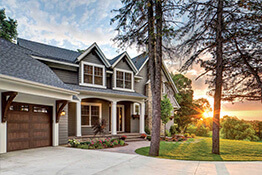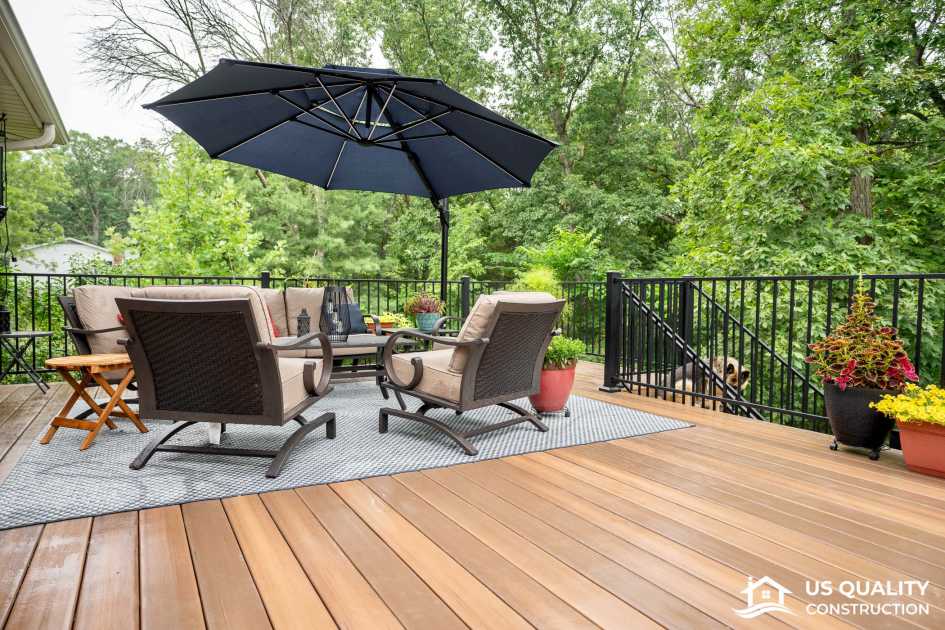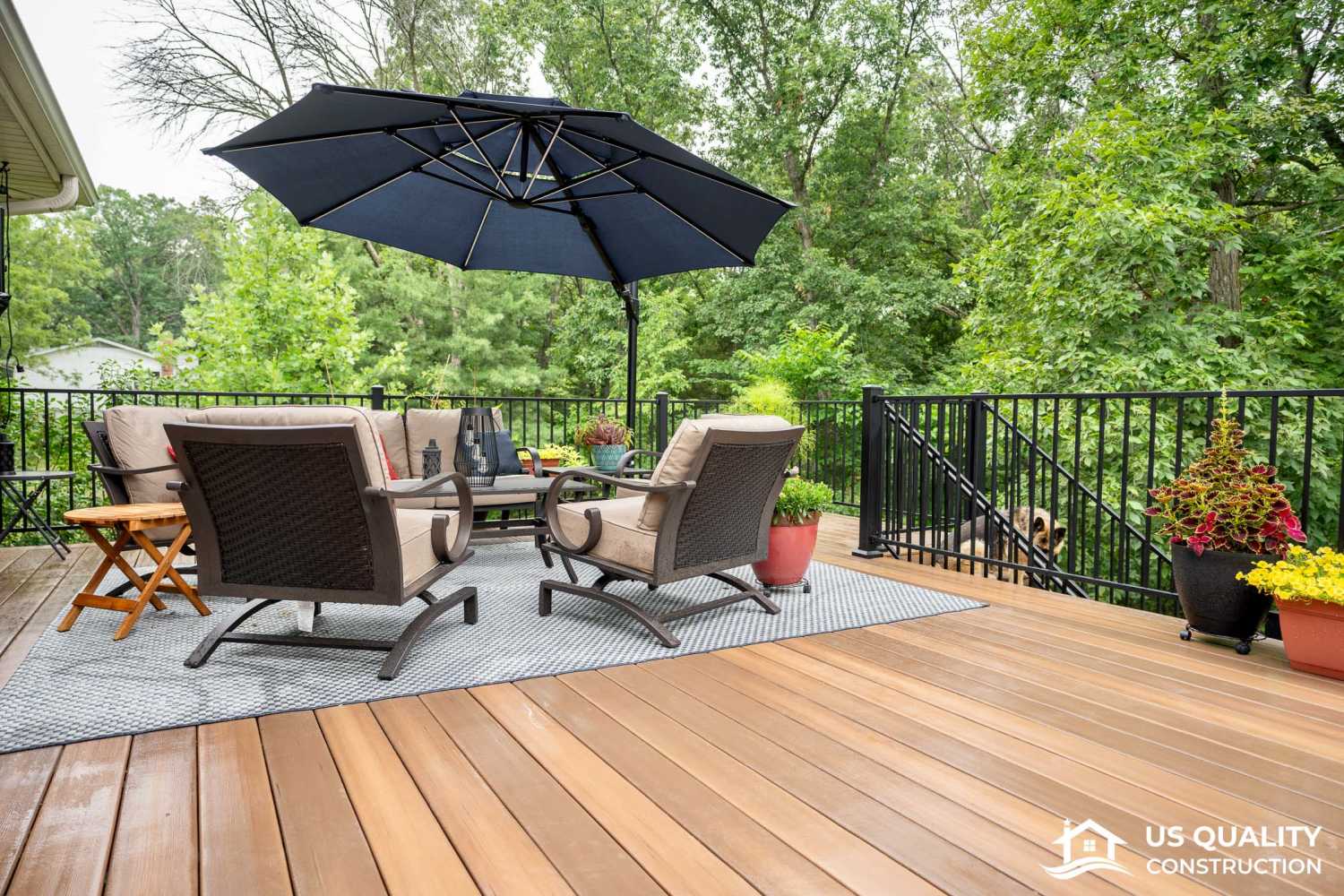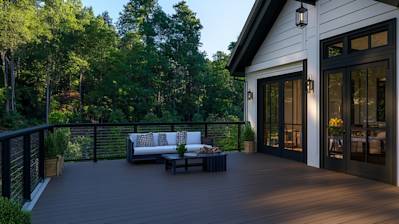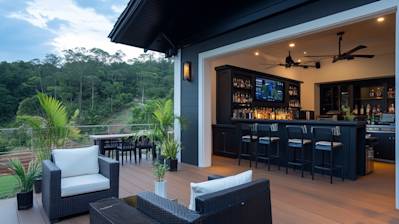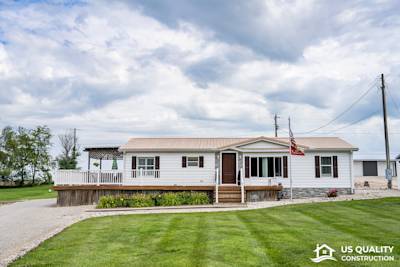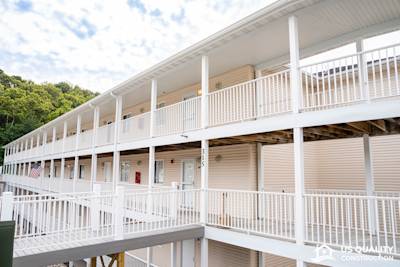As homeowners increasingly see their outdoor spaces as an extension of their home, building a deck can be an attractive option to add value, practicality, and charm to your house. When considering adding or upgrading a deck, the variety of decking material options available in the market can feel overwhelming. From traditional pressure-treated lumber and exotic hard wood to innovative composite decking boards and environmentally-friendly plastic wood, there are plenty of choices to suit your design vision, purpose, and budget. This comprehensive guide will walk you through the most popular decking material options and their unique qualities.
Traditional Pressure-Treated Wood
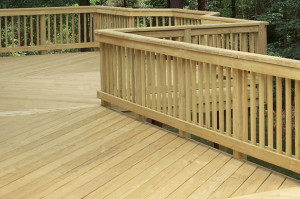
One of the most commonly used decking materials, pressure-treated wood offers a classic look that many homeowners desire. It’s a cost-effective option, thanks to its wide availability and longevity. The wood is treated with chemicals to resist rot, bugs, and moisture damage. However, these decks require frequent maintenance, including painting, staining or sealing to keep them looking good and
functional for years to come.
Cedar and Redwood Decking
Cedar and redwood are preferred by homeowners looking for a step-up from pressure-treated wood for their decks. These types of wood are naturally resistant to rot, decay, and insects without the need for chemical treatment. They are more expensive, but offer beautiful, rich colors and grain patterns, providing an exquisite finish for any deck style. Regular maintenance is still required to keep the wood from warping or fading, but it’s a great investment for longevity and aesthetic appeal.

Cedar
- Cedar is a softwood that offers a rich, reddish-brown hue.
- It's lightweight and easy to work with.
- The fact that it is naturally bug-resistant makes it a great choice.
Redwood
- Like cedar, redwood has a stunning color and is naturally resistant to bugs.
- It is more denser and heavier, making it sturdier than cedar.
- But, it is also more expensive due to limited availability.
Exotic Hardwood Decking
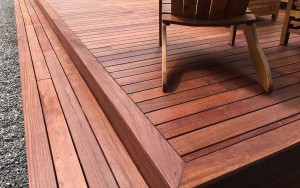
For a truly distinctive and upscale look, consider decking options like ipe wood, teak, or
mahogany. These exotic hardwoods are not only eye-catching but also extremely tough and durable. They contain natural oils that make
them resistant to rot, decay, and insect damage, which makes them perfect for decking applications. However, they require regular maintenance to maintain their color and to prevent splitting and warping. These decking material options are also more expensive and may not be as readily available.
Composite Decking

Composite decking represents the forefront of decking technology, combining aesthetics with functionality and sustainability. It's designed for homeowners who appreciate the natural beauty of wood but prefer a more durable and lower maintenance option. Here's a deeper dive into what makes composite decking stand out:
Material Composition and Durability: Composite decking is made from a blend of
wood fibers and plastics, which are then formed into boards. This unique composition gives it superior durability compared to traditional wood. The wood fibers provide the natural look and feel of wood, while the plastic components contribute to its moisture resistance and strength. The result is a decking material that's resistant to rot, decay, and insect infestation, ensuring a long lifespan with minimal upkeep.
Maintenance and Care: One of the most appealing features of composite decking is its low maintenance requirements. Unlike wood decking, which needs to be regularly stained, sealed, or painted, composite decking requires only basic cleaning to maintain its appearance. This can save homeowners significant time and money over the life of the deck.
Aesthetic Options: Composite decking comes in a wide variety of colors, textures, and finishes. Manufacturers have made great strides in mimicking the look of natural wood, including realistic wood grain patterns and color variations. This variety allows homeowners to choose a look that perfectly matches their home's exterior and personal style without sacrificing durability or ease of maintenance.
Environmental Impact: Many composite decking products are made using recycled materials, including reclaimed wood and recycled plastics. This not only reduces waste but also decreases the demand for virgin timber. By choosing composite decking, homeowners can enjoy the look and feel of a wooden deck while making a more environmentally friendly choice.
Installation and Cost: While composite decking can have a higher upfront cost compared to traditional wood decking, its long-term savings on maintenance, repair, and replacement can make it a more cost-effective option over time. Additionally, its ease of installation can further reduce initial costs, making it a compelling choice for both new deck constructions and renovations.
Considerations: When choosing composite decking, it's important to consider the specific brand and product line, as quality and performance can vary. Some higher-end options offer enhanced features like improved fade and scratch resistance, while others may be more budget-friendly but with fewer advanced features.
Plastic Wood or PVC Decking

Plastic wood or PVC (polyvinyl chloride) decking is a completely synthetic decking material option. It is highly resistant to the elements, doesn’t warp or splinter, and is also resistant to insects and rot. Plastic wood decking is available in a wide range of colors, and it doesn’t need staining, painting or sealing. Some brands also offer matching railings, balustrades, and other accessories to create a cohesive design. However, compared to other decking material options, it is a premium choice and can be slippery when wet.
Picking The Right Decking Material Option
Each decking material option has its own benefits and drawbacks. While some people prefer the natural beauty and traditional feel of wood, others may opt for the low-maintenance and durability of composite or PVC decking. Regardless of the material you chose, all decks require some form of maintenance, whether it’s cleaning, sealing, staining, or repairing. So, choose a material that not only suits your aesthetic preferences and budget but also aligns with the level of maintenance you are willing and able to commit.
Remember, the decking material is the foundation of your outdoor space. It not only influences the look, feel, and durability of your deck, but also impacts its lifespan, maintenance needs, and overall cost. Make sure to compare all decking material options before making a decision to ensure you’re investing wisely in a deck that will enhance the value and enjoyment of your home for many years to come.
FAQs on Decking Material Options
What are some popular options for decking materials?
There are many decking material options that homeowners can choose from. These include pressure-treated wood, composite materials, PVC or plastic, aluminum, cedar, redwood, hardwood, and more. The choice greatly depends on your budget, aesthetic preferences, and maintenance requirements.
Is composite decking a good material choice?
Yes, composite decking can be an excellent choice for many homeowners. It's a blend of wood fibers and recycled plastics that provides the natural look of wood without the high maintenance. It is resistant to rot, pests, and weather conditions, making it a durable and long-lasting option.
What makes pressure-treated wood popular for decking?
Pressure-treated wood is a favorite choice because it's relatively inexpensive, readily available, and easy to work with. It is treated with chemicals to resist decay, rot, and insect damage. However, it does require regular maintenance, like staining and sealing, to prevent weather damage.
Why do some people opt for PVC decking materials?
PVC decking, made from polyvinyl chloride, is a popular choice because it's lightweight and requires low maintenance. It's resistant to rot, mildews, and insects. It's also free of wood filler, making it more water-resistant than composite decking. It comes in a variety of colors and does not require painting or staining.
What are the benefits of using aluminium decking?
Aluminum decking is incredibly strong, lightweight and weather-resistant. It doesn't warp, rot or attract pests like wood. Also, it is naturally resistant to fire and is easy to clean. However, it may not provide the "warm" aesthetics that wood does.
How does cedar and redwood deck materials compare?
Cedar and redwood are both natural wood options that are favored for their beautiful, rich colors. They are more expensive than pressure-treated wood but require less maintenance. Both woods have natural resistance to decay, but redwood holds up better to insects.
What is hardwood decking and what are its benefits?
Hardwood decking materials include exotic woods like ipe or teak. These materials are very dense and incredibly durable. They are resistant to rot and insects and can last for decades with minimal maintenance. Their distinct colors and grains make them a unique, premium choice for decking.
How often will I need to replace my decking?
The lifespan of your deck highly depends on the materials you choose and how well you maintain it. Pressure-treated woods can last around 15 years with proper maintenance, while composite and PVC can last over 25 years. Hardwoods and aluminium can last even longer. However, always check with the manufacturer's given lifespan for your chosen material.
How do the costs compare between different decking materials?
The costs vary greatly. Pressure-treated wood is the most cost-effective but requires regular maintenance. Composite and PVC are more expensive upfront but could save money over time due to less maintenance. Natural woods like cedar or redwood are pricier, and exotic hardwoods are usually the most expensive, but can last a lifetime.
Are decking materials sustainable and eco-friendly?
Some decking materials are more eco-friendly than others. Composite decking is made from recycled materials, while hardwoods are often sustainably sourced. PVC and aluminium are less eco-friendly due to the processes used to produce them. If sustainability is a factor in your decision, research the manufacturing process of your preferred material.
Can I install decking material myself, or do I need professional help?
DIY installation is possible with most decking materials, especially if you're handy and have the necessary tools. However, for optimal results, it might be beneficial to hire a professional. Some materials like aluminum or hardwoods may require specialized equipment or skills for installation.
Decking Material Options: A Detailed Pros & Cons Analysis
Wood Decking Materials
Pros
- Offers a classical, luxurious aesthetic appeal.
- There are several types of wood options available in different shades and patterns, like Cedar, Redwood, or Tropical Hardwoods.
- Wood decks can potentially increase the resale value of the property.
- Offers room for customization through staining and painting.
- Biodegradable and thus environment friendly.
Cons
- Wooden decking materials require regular maintenance to prevent warping and rotting.
- Without proper treatment, wood decks can be susceptible to insect damage.
- Some types of wood, like Tropical Hardwoods, can be quite expensive.
- Installation of wooden decks can be labour intensive.
- They have a shorter lifespan compared to other materials.
Composite Decking Materials
Pros
- Composite decking materials are durable and long-lasting.
- They are available in various colours and textures, closely mimicking the look of natural wood.
- Composite decks are resistant to warping, rotting, and insect damage.
- Requires relatively less maintenance than wood decks.
- Being made up of recycled materials, composite decking is an eco-friendly option.
Cons
- Materials for composite decking can be more expensive than natural wood.
- The color of the deck can fade over time due to sun exposure.
- Although resembling natural wood, the synthetic nature of the material might not be appealing to everyone.
- Composite decks can be prone to staining and scratches.
- Unlike wood, these cannot be re-stained or painted.
Plastic (PVC) Decking Materials
Pros
- PVC decking materials are highly resistant to moisture, insects, and UV rays.
- They require minimal maintenance and are not prone to splintering or warping.
- Plastic decks can be cleaned easily with just soap and water.
- Being lightweight, the installation is relatively easier.
- These decks are available in a variety of colors.
Cons
- Plastic decking materials can be more expensive than other options.
- They can get very hot when exposed to the sun making it uncomfortable to walk on.
- Some people might not find the plastic look appealing.
- Unlike wood, PVC decks cannot be stained or painted to change the colour.
- Fading colours over time is a common issue with plastic decks.
Aluminum Decking Materials
Pros
- Aluminum decks are extremely durable, resistant to rotting, warping, and insect damage.
- They require very little maintenance and have a high fire-resistance rating.
- Being lightweight, they are easier to install.
- Aluminum does not fade or rust, maintaining its look over the years.
- Though rare, Aluminum decks can also be painted.
Cons
- Aluminum decking materials can be the most expensive of all options.
- They can be quite noisy during rain or when walked on.
- Some people may find the industrial look of aluminum not as appealing as wood or composite.
- The installation of aluminum decks can be tricky and might require professional help.
- They can be cooler than other materials but can be slippery when wet.
Summary
There's no one-size-fits-all when it comes to decking material options. It's all about picking a material that suits your requirements, aesthetic preferences, and budget. Whether you prefer the natural charm of wood decks or the low maintenance, durability, and customization options presented by composite materials or even the minimalist yet strong metal decks, the choice is certainly yours to make. It's crucial to weigh the pros and cons of each material before making the final decision.
The key to choosing the right decking material options lies in understanding how each material behaves in different conditions. You might want to consider factors like resistance to weather changes, pests, moisture and rot, longevity, and maintenance needs. For instance, while wood might require frequent staining or painting, composite decks might only need an occasional hosing down, and metal decks could prove to be the most durable option.
In the end, whatever decking material options you decide to go with, remember that deck is an extension of your living space. It not only adds value to your property but also enhances your outdoor living experience. From hosting parties and barbecues to providing a tranquil space for relaxation, your deck can bring a whole new dimension to your home. So, choose wisely and make the most of your outdoor space.
About US Quality Construction
Meet US Quality Construction, proudly serving the good folks of Kansas City, MO for many prosperous years. We’re not just a construction company, we're a pillar of the community. Ensuring quality and durability in every nail we drive and every brick we lay. With us, you're getting personalized service, expertise, and an unparalleled commitment to your dreams. After all, it's not just about buildings but the people we build them for. Welcome to our family, let's create something beautiful together.
Tags: decking materials, outdoor projects, home improvement,
